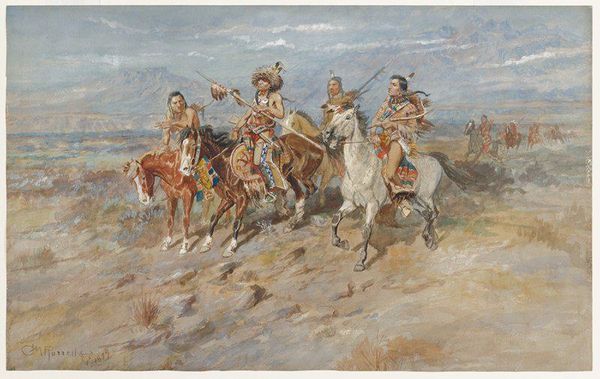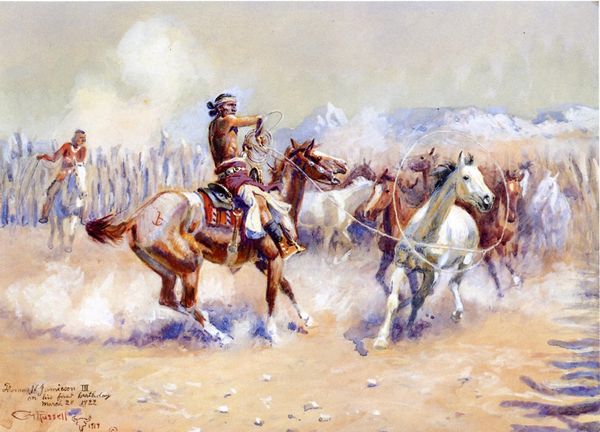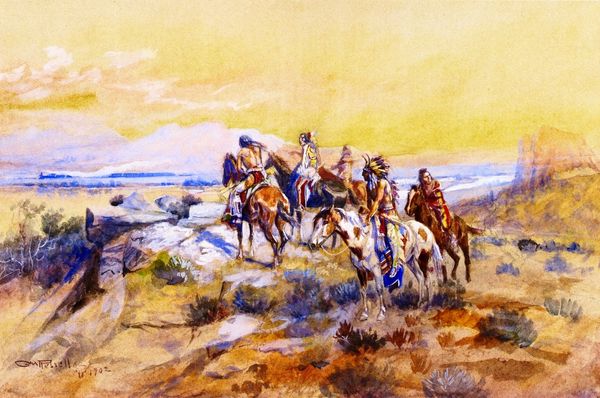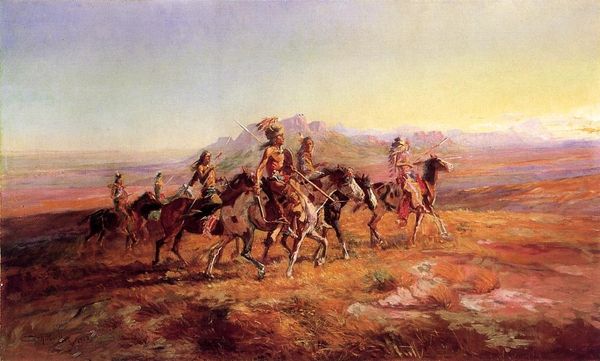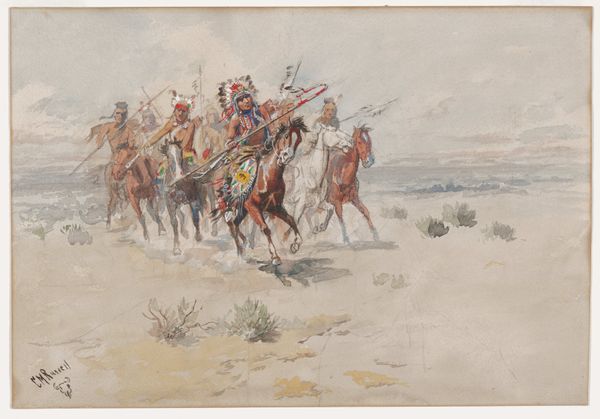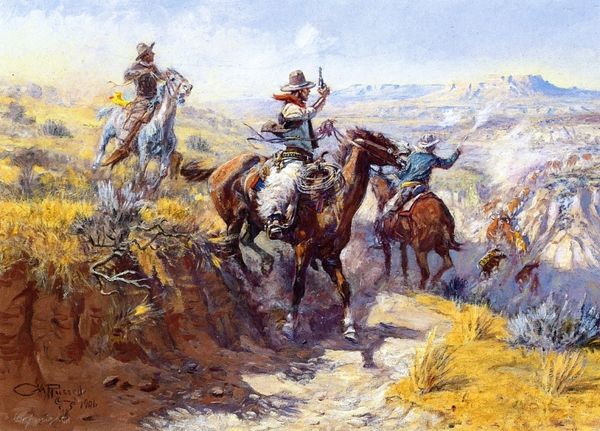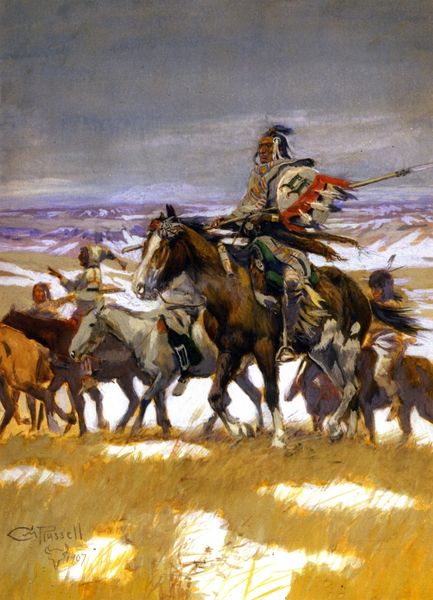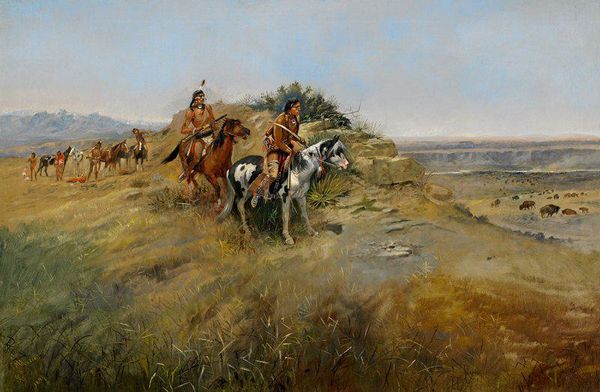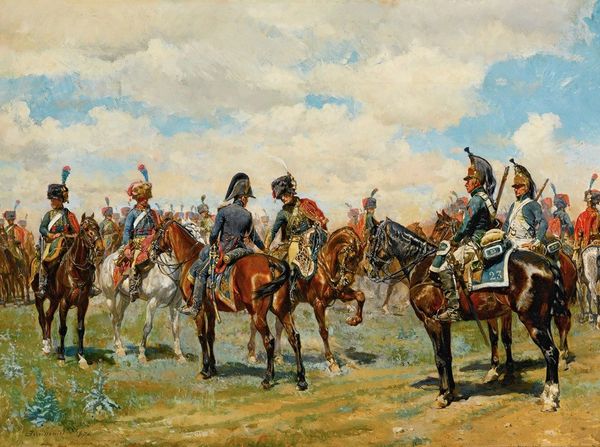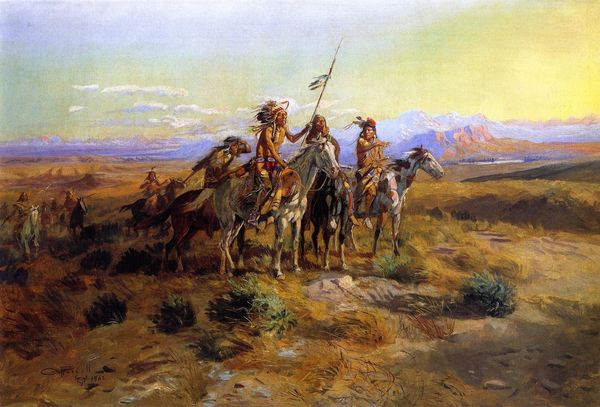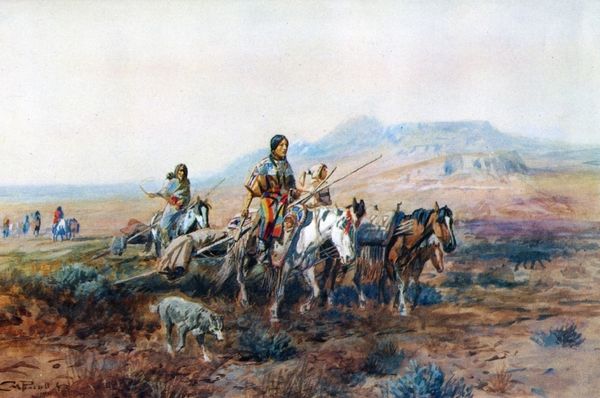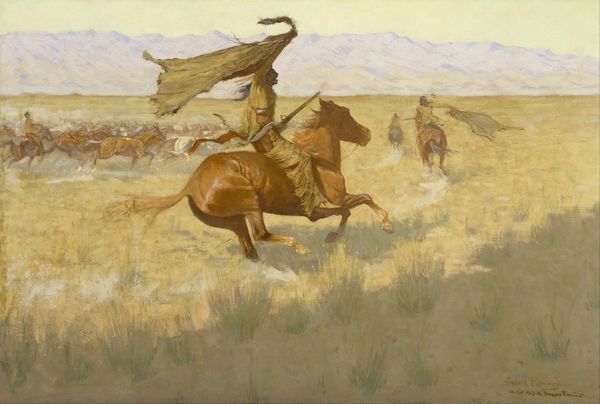
drawing, watercolor
#
portrait
#
drawing
#
narrative-art
#
landscape
#
figuration
#
watercolor
#
watercolour illustration
Dimensions: 16 1/8 x 23 1/16 in. (40.96 x 58.58 cm)
Copyright: No Copyright - United States
Editor: We’re looking at “Stolen Women,” a watercolor and gouache drawing by Charles M. Russell, made in 1907. It depicts a group on horseback, presumably Indigenous people. The light feels diffused, almost dreamlike. How do we read the materiality of watercolor in this context, particularly given the artwork's title? Curator: The ethereal quality you mention, achieved through the layering of watercolor, belies the violent narrative. Notice how the thin washes of pigment render the figures and landscape almost indistinct. Consider the process of watercolor itself—a medium often associated with spontaneity and lightness—and how Russell employs it to depict a heavy subject like abduction. What does the choice of such a 'delicate' material say about the perspective Russell offers? Editor: That's a jarring juxtaposition. It feels like the technique might soften the impact of the theme. Was he deliberately distancing himself, or his audience, from the brutal reality? Curator: Exactly. Think about the labour involved in producing pigments at the time. Where would Russell have sourced them, and what does this say about his relationship to the land and its resources, in contrast to those he depicts? How might the accessibility and cost of watercolor contribute to a particular representation, perhaps sanitizing or romanticizing the harsh realities of westward expansion and the displacement of Indigenous communities? The soft application of pigment serves to 'illustrate' and thus ‘mediate’ the scene rather than presenting an unvarnished image. Editor: So, the choice of watercolor, rather than, say, oil, directly informs our understanding of the narrative and the artist’s position within it. Curator: Precisely. The very act of choosing and manipulating the material, along with its socio-economic context, shapes the story being told. This materiality becomes another layer of meaning that intersects with and potentially complicates Russell’s depiction of the West. Editor: It changes my whole perspective, realizing how much the material choices are impacting how I view this work. Thank you. Curator: It has made me reconsider its colonialist perspective.
Comments
No comments
Be the first to comment and join the conversation on the ultimate creative platform.
